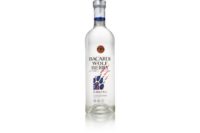Have You Tried a Peristaltic Pump for that Tough Application?

The basic principle of a peristaltic pump is a mechanical application of "peristalsis," a physiological term referring to the alternating contraction and relaxation of muscles around a tube (throat or intestines for example) to force the tube's contents through it. Understandably, the application of this basic peristaltic principle as a method of mechanical fluid transfer was developed in medical and biotechnology applications. A smooth wall flexible tube or hose is squeezed along its length, positively displacing the fluid contained within the tube. The tube's restitution after the squeeze creates a vacuum, which draws more fluid into the tube, creating a gentle pumping action with minimal damage to the media inside the tube, particularly when compared to other methods of mechanical transfer. Also, because the fluid is contained completely within the tube, the opportunity for contamination of the fluid is also minimal.
Historically, the fundamental challenge in applying peristaltic technology to industrial applications was the development of a hose element, which could accommodate the high pressures and flow rates demanded by many industries, along with the capacity to handle highly viscous, abrasive and chemically aggressive fluids. The latest hose design is triple-layered with an extruded inner layer surrounded by a reinforcement cord matrix, and a durable, machined outer layer. The largest peristaltic pump manufacturer, Watson-Marlow Bredel, designed the first high pressure hose pump in 1973 and recently invested more than $2 million in a new hose manufacturing facility. This hose element is the "heart" of the pump. It dictates the suction lift capabilities, discharge pressure capabilities, metering accuracy and repeatability, as well as life of the pump. With new hose materials, new construction and manufacturing technology, today's industrial hose pumps are capable of over 350gpm, 230psi and metering accuracy to +/- 1%.

A hose pump rotor is located out of the pumped-product zone, and never touches the pumped media. A properly selected heavy-duty pump hose does not fail due to abrasive wear; it fails from fatigue, and number of compressions. Regardless of product, whether it is abrasive lime slurry or nonabrasive polymer, the hose life is the same.
Many process streams, controlled by a combination of pumps and flowmeters, can in fact be served just as well with a well-designed hose pump and tachometer, a considerable savings in equipment costs. High concentrations of caustic materials or particulate matter can attack the wetted parts of the flowmeter and affect the reliability of the measurement. Viscous media can coat flow sensors, affecting their measurement, and many slurries have also proven difficult to measure with a flowmeter. Utilizing a hose pump, the chemically compatible hose material can be checked and selected prior to installation, and fluid characteristics or process pressure will not affect the metering accuracy of the pump. Another nice feature of the peristaltic design, when integrated into more complex systems, is that the pump can act as its own check valve. Some portion of the hose or tube is always occluded, so when the pump stops, that point stays squeezed shut. This feature removes the need for an additional valve to prevent over-dosing or backflow.
Looking for a reprint of this article?
From high-res PDFs to custom plaques, order your copy today!




